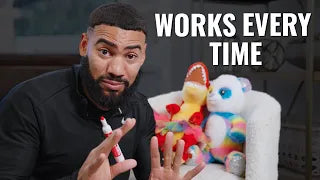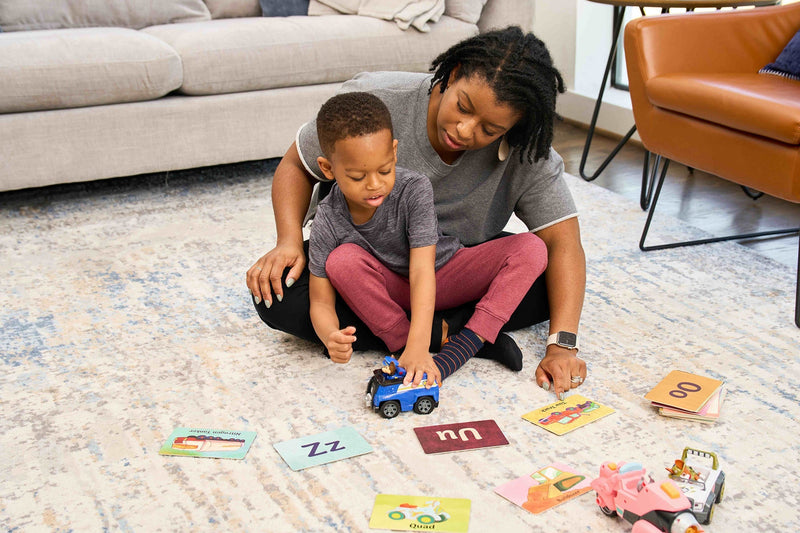Teaching your little one their letter sounds can feel overwhelming. Especially when we think about all of the different sounds that letters can make. But it doesn't have to be as confusing as it seems.
In Part 1 of this blog, I explained how to figure out what the pattern of when a letter makes each of its different sounds. As a refresher, here are a couple of the rules listed for you! ‚Üí

And honestly, figuring out the rule might be the hardest part. Now, let's jump into how to actually teach these letters with multiple sounds!
Step 1: Teach the primary sound.
Start with the basics and teach the primary sound that the letter makes. The primary sound is whichever sound the letter makes most often. For our example, the primary sound for C is the hard /k/ sound. So you would teach that sound first. You might say something like:

There are a couple of reasons we teach the primary sound first:
- It's the most common sound (ex: C says /k/ more often than it says /s/.)
- It's especially common in the early reading books they're reading, so this will help them read more books on their own and will help them feel accomplished.
And that's the only sound we're going to teach them for now, so we can keep it super simple and build their confidence. You'll do this with each of the 26 primary sounds until they've confidently mastered them all.
Step 2: Practice blending words with the primary sound.
Once they know the primary sounds, they can start to blend words that have the primary sound in them.
Since, at this point, they only know that C makes the /k/ sound, you'll only practice blending with words that have a hard /k/ sound. You'll want to focus on words like cot, cap, and cuff where the C is making the sound that they know.
Step 3: Introduce the secondary sound.
Now that your little one can blend words with the primary sound, they'll be ready to learn the other sound the letter can make (the secondary sound.) Once you've found the pattern, you can introduce the other sound. You'll say something like this:

Step 4: Practice blending the secondary sound.
Then, you'll practice blending words with the soft C sound. If they make a mistake and say the hard C /k/ sound instead of the soft C /s/ sound, just remind them that right now, they're only practicing words where C makes the /s/ sound.
Step 5: Practice blending words with both sounds.
After they've been able to blend words with the secondary sound too, it's time to practice both sounds at the same time. This will mean having them blend words with both sounds mixed in. As they read, they'll have to figure out which sound to use for each word.
Now at this point, you have two options. You can either tell them about the rules (this will be a little bit confusing for the little, little ones but works well for older children) or you can just show the words and help them learn the patterns on their own.
If you do decide to teach them the pattern, it can be helpful to prep them to blend by giving them a quick reminder such as:

Either way, it will be completely normal for our little ones to make a lot of mistakes at this point, and that's okay! You'll just simply correct them. It might sound something like this:

And I can't tell you exactly why this works, but for many kids, simply flipping that C sound to the sound that makes the most sense is enough to start internalizing those phonics rules without even knowing it (just like you did).
Still Need Support?
Hopefully, this blog has given you the tools you need to teach letters with 2 sounds in a simple, straightforward way.
But if you've made it to the end and still have a lot of questions or don't feel confident enough to start on your own, my Reading Rules course is a great resource.
Made for little ones who have mastered the primary sounds and can blend 3 and 4-sound words, the Reading Books course is designed to help teach those trickier sounds and spellings for more advanced readers. It also includes fluency passages, where your child can practice the tricky sounds they're learning within a story (this is super important to reading development).
And whether you purchase one of my courses or not, I know that you have what it takes to teach your little one how to read. If you focus on keeping it simple for you and your child, you'll be blown away by how much they can achieve.






